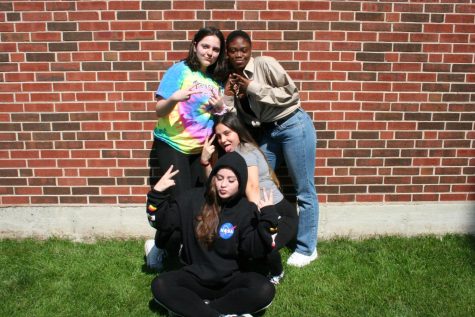National Dance Week, Orchesis spotlights power of dance
McKenna Powers and Hannah Pecis
April 30, 2014
National Dance Week runs April 25 to May 4 and has included this year’s Orchesis concert.
There are many different kinds of dance, ranging from classical Ballet all the way to just doing whatever you want in your bedroom. The most popular kinds of dances are the ones that people tend to see the most: Ballet, Jazz, and Modern.
Ballet goes back as far as the 15th century in the Renaissance court. It is the dance where the dancer tries to defy gravity and look like they’re walking on air. The word also means “to dance”. Ballet is considered to be the mother of all dances, because the techniques that are used are also found in almost every other dance. It does take a very long time to master the dance type. Many people who dance Ballet start when they’re six or seven and train until the end of their careers. There are also different types; the most common is Classical which is based off the original technique. Then there is also Nonclassical, which uses different spacing and the technique is a little bit different. Finally there is Contemporary, which is a mixture of Classical Ballet and Modern Dance.
Another popular dance form is Jazz. Jazz came around during the 1950s. This style mainly originated through the African American vernacular dance. The more modern Jazz Dance came from the Caribbean traditional dance. One of the most popular and well known moves are Jazz Hands, rolling of the shoulders, leaps and kicks. Jazz has developed alongside popular music. Syncopated rhythm is one of the characteristics in Jazz music which also transferred over to Jazz Dance. Then there are isolations and improvisation which are key elements to this type of dance. Then there is the low center of gravity and high level of energy which to most people is the most important part of this dance style.
Then there is the Modern Dance, which was created as a rebel agents Ballet, and to show that Ballet is not the only concert dance out there. The purpose of this dance is to not defy gravity and not always look so proper. In Modern there are lifts which wouldn’t be seen by any Ballet Dancer. However, there are some connections between the two; Modern takes some of their technique from Ballet, but instead of turning their feet out all the time, as in Ballet, the dancer would be in parallel.
All of these dances are performed for many people around the world, and hopefully will continue to be preformed for many more years to come. Dance isn’t meant for just some people, it can be for everyone. So use this week to just dance, and to express yourself.




